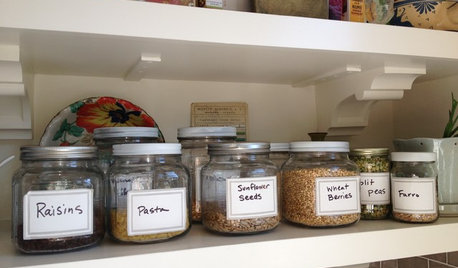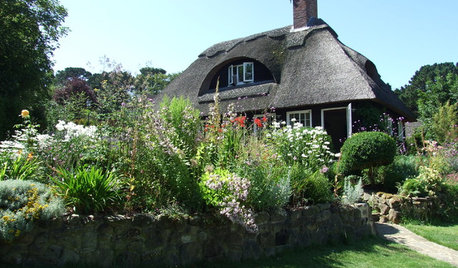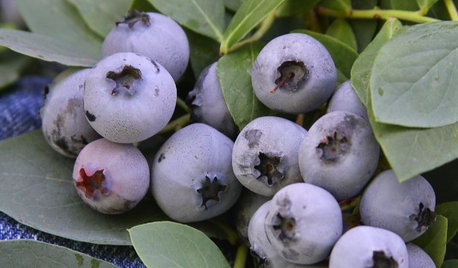Black-seeded pole beans for soup, pls
marquette
17 years ago
Featured Answer
Sort by:Oldest
Comments (23)
gardenlad
17 years agoMacmex
17 years agoRelated Discussions
WANTED: Cherokee Trail of Tears or other black seeded pole bean
Comments (2)Thank you so much for your offer Cathybt9, but I just completed a trade with someone else for black bean seeds, so I am all set now....See MoreHAVE: Pole bean seeds
Comments (8)Hi, dirtdaddy I sent them, I can not help it if the mail system "USPS" is not perfect! Here is what said about me in the Rate & Review Exchanges Forum ! Posted by Queen-Gardener 5 OH (My Page) on Tue, Oct 21, 14 at 15:57 I traded with him too, great trade, got exactly what I asked for and in the quantity I wanted. He's a good trader! Posted by vaflowernut 6 southwest Va (pcbt07@centurylink.net) on Fri, Oct 24, 14 at 17:24 I received some great seeds from farmer Ron. I'd trade again anytime. Thanks a bunch. Posted by terrigail 6b (My Page) on Mon, Nov 3, 14 at 21:00 Received a great trade from Ron today. Well packaged, prompt, and had some great info enclosed, as well. Would definitely trade again! Posted by love2gardennc z7b NC (My Page) on Tue, Nov 11, 14 at 15:42 I just received one of the best trades ever. I left it up to Ron to decide on varieties of seeds to send to me after letting him know about a group of children I work with in the spring. He sent tomato seeds with unusual colors and the most unusual of names. Ron mailed promptly to my chagrin as mine have yet to be sent. Thanks Ron, I hope we have a chance to trade again. Posted by stardrifting 5 (stardrifting1970@yahoo.com) on Sun, Nov 16, 14 at 11:38 Great trade - I think Ron had the seeds in the mail before I even told him what I wanted! Seeds are healthy-looking and he was very generous. Would trade again, anytime! Enough said!...See MoreYard Long Beans vs. pole bean
Comments (17)The red podded yardlongs have a firm texture, and somewhat of a nutty flavor. They mature later than some of the green-podded types (especially those with black seeds), and seem to prefer more heat than many of the green-podded varieties. The yield is good, but slightly less than the black-seeded varieties below. I enjoy them in part because they keep their burgundy color when cooked. There is wide variation in green-podded varieties. The black-seeded ones I've tried are generally earlier, more tolerant of cool weather, bear heavily, and have tender (even delicate) pods. One of the black-seeded varieties (with dark green pods & purple tips) has the strongest flavor of those that I've tasted; it goes by several names, including Asparagus Bean and Liana. Green-podded / red-seeded varieties seem to benefit from longer seasons, be firmer & often sweeter as a rule, have very long pods, and yields ranging from medium to somewhat heavy. Pods can be anywhere from very light green to deep green. There are many more discussions of yardlong beans on both the Bean Forum, and the Asian Vegetable Forum....See MoreKentucky Wonder Pole Bean seeds--eating them
Comments (1)Yes, they are just dried beans!...See Moregardenlad
17 years agofusion_power
17 years agozeedman Zone 5 Wisconsin
17 years agoMacmex
17 years agomarquette
17 years agoMacmex
17 years agoMacmex
17 years agomarquette
17 years agogardenlad
17 years agoMacmex
17 years agofusion_power
17 years agomarquette
17 years agoMacmex
17 years agovgautam
17 years agoMacmex
17 years agogardenlad
17 years agoMacmex
17 years agofliptx
17 years agoorganicburro
17 years agoMacmex
17 years ago
Related Stories

SUMMER FRUITS AND VEGETABLESSummer Crops: How to Grow Beans
Grow your own beans for amazing variety and healthy, convenient produce all summer
Full Story
MOST POPULARSummer Crops: How to Grow Sunflowers
Savor snack-tastic sunflower seeds once the radiant blooms have faded — if the birds have saved you any, that is
Full Story
KITCHEN STORAGEArtful Organizers: Jars for Pretty Pantry Displays
Ditch the disheveled look of mismatched boxes and bags for colorful or clear pantry jars in an appealing arrangement
Full Story
LANDSCAPE DESIGNHow to Create a Cottage-Style Garden
If you like an abundance of plants — and visits from birds, bees and butterflies — this may be the style of yard for you
Full Story
EDIBLE GARDENSSummer Crops: How to Grow Squash
Almost foolproof and with cheerful flowers, squash comes in a wide range of varieties to plant in spring
Full Story
GARDENING GUIDES15 Favorites for Your Summer Edible Garden
Get your summer garden off to a good start with these popular fruits and vegetables
Full Story
KITCHEN DESIGNWorld of Design: Favorite Recipes From Food Lovers Around the Globe
Travel with your tastebuds and experience for yourself these international foodies' favorite dishes
Full Story
EDIBLE GARDENSHow to Grow Your Own Sweet Summer Crops
This guide will help any gardener get started on growing the freshest warm-season veggies and berries for summer
Full Story
EDIBLE GARDENSHouzz Call: What Did You Grow This Summer?
Let’s celebrate the homegrown fruits and vegetables of the season. Post your pictures and tell us about your harvest
Full Story
LANDSCAPE DESIGNGreat Design Plant: Retreat to the Shade of Hardy Catalpa
Big foliage and a towering height provide a shady respite in summer, but that's not all hardy catalpa offers dedicated gardeners
Full StorySponsored



Macmex